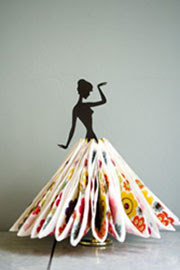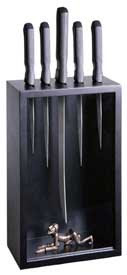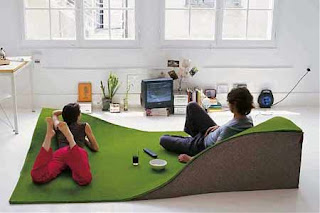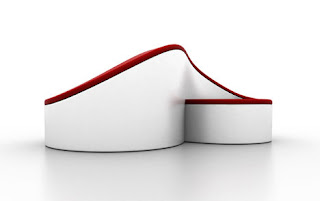| 1250 | Magnifying glass | Roger Bacon | English |
| 1450 | Printing press | Johann Gutenberg | German |
| 1504 | Pocket watch | Peter Henlein | German |
| 1590 | Compound microscope | Zacharias Janssen | Dutch |
| 1593 | Water thermometer | Galileo | Italian |
| 1608 | Telescope | Hans Lippershey | Dutch |
| 1625 | Blood transfusion | Jean-Baptiste Denys | French |
| 1629 | Steam turbine | Giovanni Branca | Italian |
| 1642 | Adding machine | Blaise Pascal | French |
| 1643 | Barometer | Evangelista Torricelli | Italian |
| 1650 | Air pump | Otto von Guericke | German |
| 1656 | Pendulum clock | Christiaan Huygens | Dutch |
| 1661 | Methanol | Robert Boyle | Irish |
| 1668 | Reflecting telescope | Isaac Newton | English |
| 1671 | Calculating machine | Gottfried Wilhelm Leibniz | German |
| 1698 | Steam pump | Thomas Savery | English |
| 1701 | Seed drill | Jethro Tull | English |
| 1710 | Piano | Bartolomeo Cristofori | Italian |
| 1712 | Steam engine | Thomas Newcomen | British |
| 1714 | Mercury thermometer | Daniel Gabriel Fahrenheit | German |
| 1717 | Diving bell | Edmund Halley | English |
| 1725 | Stereotyping | William Ged | Scottish |
| 1745 | Leyden jar (condenser) | E.G. von Kleist | German |
| 1752 | Lightning rod | Benjamin Franklin | American |
| 1758 | Achromatic lens | John Dollond | British |
| 1759 | Marine chronometer | John Harrison | British |
| 1764 | Spinning jenny | James Hargreaves | British |
| 1769 | Spinning frame | R. Arkwright | English |
| 1769 | Steam engine (with separate condenser) | James Watt | British |
| 1769 | Automobile | Nicholas-Joseph Cugnot | French |
| 1775 | Submarine | David Bushnell | American |
| 1780 | Steel pen | Samuel Harrison | English |
| 1780 | Bifocal lens | Benjamin Franklin | American |
| 1783 | Balloon | Joseph Michel Montgolfier and
Jacques Ø©tienne Montgolfier | French |
| 1784 | Threshing machine | Andrew Meikle | British |
| 1785 | Power loom | Edmund Cartwright | British |
| 1786 | Steamboat | John Fitch | American |
| 1788 | Flyball governor | James Watt | British |
| 1791 | Gas turbine | John Barber | British |
| 1792 | Illuminating gas | William Murdock | Scottish |
| 1793 | Cotton gin | Eli Whitney | American |
| 1795 | Hydraulic press | Joseph Bramah | English |
| 1796 | Lithography | Aloys Senefelder | German |
| 1796 | Smallpox vaccination | Edward Jenner | British |
| 1799 | Fourdrinier machine (papermaking) | Louis Robert | French |
| 1800 | Jacquard loom | Joseph Marie Jacquard | French |
| 1800 | Electric battery | Count Alessandro Volta | Italian |
| 1801 | Pattern loom | Joseph Marie Jacquard | French |
| 1804 | Screw propeller | John Stevens | American |
| 1804 | Solid-fuel rocket | William Congreve | British |
| 1804 | Steam locomotive | Richard Trevithick | British |
| 1805 | Electroplating | Luigi Gasparo Brugnatelli | Italian |
| 1810 | Food preservation (by sterilization and exclusion of air) | François Appert | French |
| 1810 | Printing press | Frederick Koenig | German |
| 1814 | Railroad locomotive | George Stephenson | British |
| 1815 | Safety lamp | Sir Humphry Davy | British |
| 1816 | Bicycle (no pedals) | Karl D. Sauerbronn | German |
| 1819 | Stethoscope | René-Théophile-Hyacinthe Laënnec | French |
| 1820 | Hygrometer | J.F. Daniell | English |
| 1820 | Galvanometer | Johann Salomo Cristoph Schweigger | German |
| 1821 | Electric motor | Michael Faraday | British |
| 1823 | Silicon | JÙns Jakob Berzelius | Swedish |
| 1823 | Electromagnet | William Sturgeon | British |
| 1824 | Portland cement | Joseph Aspdin | British |
| 1827 | Friction match | John Walker | British |
| 1829 | Typewriter1 | W.A. Burt | American |
| 1829 | Braille printing | Louis Braille | French |
| 1830 | Platform scales | Thaddeus Fairbanks | American |
| 1830 | Sewing machine | Barthélemy Thimonnier | French |
| 1831 | Phosphorus match | Charles Sauria | French |
| 1831 | Reaper | Cyrus Hall McCormick | American |
| 1831 | Dynamo | Michael Faraday | British |
| 1834 | Electric streetcar | Thomas Davenport | American |
| 1835 | Pistol (revolver) | Samuel Colt | American |
| 1837 | Telegraph | Samuel Finley Breese Morse
Sir Charles Wheatstone | American
British |
| 1838 | Morse code | Samuel Finley Breese Morse | American |
| 1839 | Photography | Louis Jacques Mandé Daguerre and
Joseph Nicéphore Niepce William Henry Fox Talbot | French
British |
| 1839 | Vulcanized rubber | Charles Goodyear | American |
| 1839 | Steam hammer | James Nasmyth | Scottish |
| 1839 | Bicycle (with pedals) | Kirkpatrick MacMillan | British |
| 1845 | Pneumatic tire | Robert William Thompson | American |
| 1846 | Rotary printing press | Richard March Hoe | American |
| 1846 | Nitroglycerin | Ascanio Sobrero | Italian |
| 1846 | Guncotton | Christian Friedrich SchÙnbein | German |
| 1846 | Ether | Crawford Williamson Long | American |
| 1849 | Reinforced concrete | F.J. Monier | French |
| 1849 | Safety pin | Walter Hunt | American |
| 1849 | Water turbine | James Bicheno Francis | American |
| 1850 | Mercerized cotton | John Mercer | British |
| 1851 | Breech-loading rifle | Edward Maynard | American |
| 1851 | Opthalmoscope | Hermann Ludwig Ferdinand von Helmholtz | German |
| 1852 | Nonrigid airship | Henri Giffard | French |
| 1852 | Elevator (with brake) | Elisha Graves Otis | American |
| 1852 | Gyroscope | Jean Bernard Léon Foucault | French |
| 1855 | Hypodermic syringe | Alexander Wood | Scottish |
| 1855 | Safety matches | J.E. Lundstrom | Swedish |
| 1856 | Bessemer converter (steel) | Sir Henry Bessemer | British |
| 1858 | Harvester | Charles and William Marsh | American |
| 1859 | Spectroscope | Gustav Robert Kirchhoff and
Robert Wilhelm Bunsen | German |
| 1860 | Gas engine | Jean-Joseph-Ø©tienne Lenoir | French |
| 1861 | Web-fed newspaper printing press | Richard March Hoe | American |
| 1861 | Electric furnace | Wilhelm Siemens | British |
| 1861 | Machine gun | Richard Jordan Gatling | American |
| 1861 | Kinematoscope | Coleman Sellers | American |
| 1865 | Antiseptic surgery | Joseph Lister | English |
| 1866 | Paper (from wood pulp, sulfite process) | Benjamin Chew Tilghman | American |
| 1866 | Dynamite | Alfred Bernhard Nobel | Swedish |
| 1868 | Dry cell | Georges Leclanché | French |
| 1868 | Typewriter | Carlos Glidden and
Christopher Latham Sholes | American |
| 1868 | Air brake | George Westinghouse | American |
| 1870 | Celluloid | John Wesley Hyatt and Isaiah Hyatt | American |
| 1871 | Continuous current dynamo | Zénobe-Théophile Gramme | Belgian |
| 1874 | Quadruplex telegraph | Thomas Alva Edison | American |
| 1876 | Telephone2 | Alexander Graham Bell
Antonio Meucci | American
Italian |
| 1877 | Internal-combustion engine (four-cycle) | Nikolaus August Otto | German |
| 1877 | Talking machine (phonograph) | Thomas Alva Edison | American |
| 1877 | Microphone | Emile Berliner | American |
| 1877 | Electric welding | Elihu Thomson | American |
| 1877 | Refrigerator car | G.F. Swift | American |
| 1878 | Cream separator | Carl Gustav de Laval | Swedish |
| 1878 | Cathode ray tube | Sir William Crookes | British |
| 1879 | Cash register | James J. Ritty | American |
| 1879 | Incandescent filament lamp | Thomas Alva Edison
Sir Joseph Wilson Swan | American
British |
| 1879 | Automobile engine (two-cycle) | Karl Benz | German |
| 1879 | Arc lamp | Charles Francis Bush | American |
| 1880 | Linotype | Ottmar Mergenthaler | American |
| 1884 | Steam turbine | C.A. Parsons | English |
| 1884 | Rayon (nitrocellulose) | Comte Hilaire Bernigaud de Chardonnet | French |
| 1884 | Multiple-wheel steam turbine | Sir Charles Algernon Parsons | British |
| 1884 | Nipkow disk (mechanical television scanning device) | Paul Gottlieb Nipkow | German |
| 1884 | Fountain pen | Lewis Edson Waterman | American |
| 1885 | Graphophone (dictating machine) | Chichester A. Bell and
Charles Sumner Tainter | American |
| 1885 | AC transformer | William Stanley | American |
| 1887 | Air-inflated rubber tire | J.B. Dunlop | Scottish |
| 1887 | Gramophone (disk records) | Emile Berliner | American |
| 1887 | Gas mantle | Baron Carl Auer von Welsbach | Austrian |
| 1887 | Mimeograph | Albert Blake Dick | American |
| 1887 | Monotype | Tolbert Lanston | American |
| 1888 | Adding machine (recording) | William Seward Burroughs | American |
| 1888 | Kodak camera | George Eastman | American |
| 1889 | Steam turbine | C.G. de Laval | Swedish |
| 1890 | Rayon (cuprammonium) | Louis Henri Despeissis | French |
| 1891 | Glider | Otto Lilienthal | German |
| 1891 | Motion picture camera (kinetograph) | Thomas Alva Edison
William K. L. Dickson | American
British |
| 1891 | Motion picture viewer (kinetoscope) | Thomas Alva Edison
William K. L. Dickson | American
British |
| 1891 | Synthetic rubber | Sir William Augustus Tilden | British |
| 1892 | AC motor | Nikola Tesla | American |
| 1892 | Three-color camera | Frederick Eugene Ives | American |
| 1892 | Rayon (viscose) | Charles Frederick Cross | British |
| 1892 | Vacuum bottle (Dewar flask) | Sir James Dewar | British |
| 1893 | Photoelectric cell | Julius Elster Hans F. Geitel | German |
| 1893 | Diesel engine | Rudolf Diesel | German |
| 1893 | Gasoline automobile | Charles Edgar Duryea and
J. Frank Duryea | American |
| 1894 | Motion picture projection | Louis Jean Lumière and Auguste Marie Lumière
Charles Francis Jenkins | French
American |
| 1895 | X-ray | Wilhelm Konrad RÙntgen | German |
| 1895 | Rayon (acetate) | Charles Frederick Cross | British |
| 1895 | Wireless telegraph | Marchese Guglielmo Marconi | Italian |
| 1896 | Experimental airplane | Samuel Pierpont Langley | American |
| 1898 | Sensitized photographic paper | Leo Hendrik Baekeland | American |
| 1900 | Rigid dirigible airship | Graf Ferdinand von Zeppelin | German |
| 1902 | Radiotelephone | Valdemar Poulsen
Reginald Aubrey Fessenden | Danish
American |
| 1903 | Airplane | Wilbur Wright and Orville Wright | American |
| 1903 | Windshield wipers | Mary Anderson | American |
| 1903 | Electrocardiograph | Willem Einthoven | Dutch |
| 1905 | Diode rectifier tube (radio) | Sir John Ambrose Fleming | British |
| 1906 | Gyrocompass | Hermann Anschütz-Kنmpfe | German |
| 1907 | Bakelite | Leo Hendrik Baekeland | American |
| 1907 | Triode amplifier tube (radio) | Lee De Forest | American |
| 1908 | Cellophane | Jacques Edwin Brandenberger | Swiss |
| 1908 | Two-color motion picture camera | C. Albert Smith | British |
| 1909 | Salvarsan | Paul Ehrlich | German |
| 1910 | Hydrogenation of coal | Friedrich Bergius | German |
| 1910 | Gyroscopic compass and stabilizer | Elmer Ambrose Sperry | American |
| 1911 | Air conditioning | W.H. Carrier | American |
| 1911 | Vitamins | Casimir Funk | Polish |
| 1911 | Cellophane | Jacques Edwin Brandenberger | Swiss |
| 1911 | Neon lamp | Georges Claude | French |
| 1912 | Mercury-vapor lamp | Peter Cooper Hewitt | American |
| 1913 | Ramjet engine | René Lorin | French |
| 1913 | Multigrid electron tube | Irving Langmuir | American |
| 1913 | Cracked gasoline | William Meriam Burton | American |
| 1913 | Heterodyne radio receiver | Reginald Aubrey Fessenden | American |
| 1915 | Automobile self-starter | Charles Franklin Kettering | American |
| 1916 | Browning gun (automatic rifle) | John Moses Browning | American |
| 1916 | Gas-filled incandescent lamp | Irving Langmuir | American |
| 1916 | X-ray tube | William David Coolidge | American |
| 1919 | Mass spectrograph | Sir Francis William Aston
Arthur Jeffrey Dempster | British
American |
| 1922-26 | Sound motion pictures | T.W. Case | American |
| 1922 | Insulin | Sir Frederick Grant Banting | Canadian |
| 1923 | Autogiro | Juan de la Cierva | Spanish |
| 1923 | Television iconoscope | Vladimir Kosma Zworykin | American |
| 1924 | Quick-frozen food | Clarence Birdseye | American |
| 1925 | Television image dissector tube | Philo Taylor Farnsworth | American |
| 1926 | Aerosol can | Erik Rotheim | Norwegian |
| 1926 | Liquid-fuel rocket | Robert Hutchings Goddard | American |
| 1928 | Penicillin | Sir Alexander Fleming | British |
| 1930 | Bathysphere | (Charles) William Beebe | American |
| 1930 | Freon (low-boiling fluorine compounds) | Thomas Midgley and coworkers | American |
| 1930 | Modern gas-turbine engine | Sir Frank Whittle | British |
| 1930 | Neoprene (synthetic rubber) | Father Julius Arthur Nieuwland and Wallace Hume Carothers | American |
| 1931 | Cyclotron | Ernest Orlando Lawrence | American |
| 1931 | Differential analyzer (analogue computer) | Vannevar Bush | American |
| 1932 | Phase contrast microscope | Frits Zernike | Dutch |
| 1932 | Van de Graaff generator | Robert Jemison Van de Graaff | American |
| 1933 | Frequency modulation (FM) | Edwin Howard Armstrong | American |
| 1935 | Buna (synthetic rubber) | German scientists | German |
| 1935 | Radiolocator (radar) | Sir Robert Watson-Watt | British |
| 1935 | Cortisone | Edward Calvin Kendall
Tadeus Reichstein | American
Swiss |
| 1935 | Electron microscope | German scientists | German |
| 1935 | Sulfanllamide | Gerhard Domagk | German |
| 1935 | Nylon | Wallace Hume Carothers | American |
| 1936 | Twin-rotor helicopter3 | Heinrich Focke | German |
| 1937 | Snowmobile | Armand Bombardier | Canadian |
| 1938 | Ballpoint pen | Georg and Ladislao Biro | Hungarian |
| 1939 | DDT | Paul Müller | Swiss |
| 1939 | Helicopter4 | Igor Sikorsky | American |
| 1940 | Betatron | Donald William Kerst | American |
| 1941 | Turbojet aircraft engine | Sir Frank Whittle | British |
| 1942 | Guided missile | Wernher von Braun | German |
| 1942 | Nuclear reactor | Enrico Fermi | American |
| 1942 | Xerography | Chester Carlson | American |
| 1944 | V-2 (rocket-propelled bomb) | German scientists | German |
| 1945 | Atomic bomb | U.S. government scientists | American |
| 1945 | Streptomycin | Selman A. Waksman | American |
| 1946 | Electronic digital computer | John Presper Eckert, Jr., and
John W. Mauchly | American |
| 1947 | Holography | Dennis Gabon | English |
| 1947 | Chlormycetin | Mildred Rebstock | American |
| 1947 | Polaroid Land camera | Edwin Herbert Land | American |
| 1947 | Bathyscaphe | Auguste Piccard | Swiss |
| 1947 | Microwave oven | Percy L. Spencer | American |
| 1948 | Scintillation counter | Hartmut Kallmann | German |
| 1948 | Aureomycin | Benjamin Minge Duggar and
Chandra Bose Subba Row | American |
| 1948 | Transistor | John Bardeen, Walter Houser Brattain, and William Shockley | American |
| 1949 | Ramjet airplane | René Leduc | French |
| 1950 | Color television | Peter Carl Goldmark | American |
| 1952 | Hydrogen bomb | U.S. government scientists | American |
| 1952 | Bubble chamber (nuclear particle detector) | Donald Arthur Glaser | American |
| 1953 | Maser | Charles Townes | American |
| 1954 | Solar battery | Bell Telephone Laboratory scientists | American |
| 1954 | Polio vaccine | Jonas Salk | American |
| 1955 | Synthetic diamonds | General Electric scientists | American |
| 1955 | Carbon dating | W.F. Libby | American |
| 1955 | Optical fibers | Narinder S. Kapany | Indian |
| 1956 | Hovercraft | Christopher Cockerell | English |
| 1956 | First prototype rotary engine | Felix Wankel | German |
| 1956 | Videotape | Charles Ginsberg
Ray Dolby | American |
| 1957 | Sodium-cooled atomic reactor | U.S. government scientists | American |
| 1957 | Artificial earth satellite | USSR government scientists | Soviet |
| 1958 | Communications satellite | U.S. government scientists | American |
| 1959 | Integrated circuit | Jack Kilby
Robert Noyce | American |
| 1960 | Laser | Charles Hard Townes, Arthur L. Schawlow, and Gordon Gould | American |
| 1960 | Chlorophyll synthesized | Robert Burns Woodward | American |
| 1960 | Birth-control pill | Gregory Pincus, John Rock, and
Min-chueh Chang | American |
| 1962 | Light-emitting diode (LED) | Nick Holonyak, Jr. | American |
| 1964 | Liquid-crystal display | George Heilmeier | American |
| 1965 | Kevlar technology | Stephanie Kwolek | American |
| 1966 | Artificial heart (left ventricle) | Michael Ellis DeBakey | American |
| 1966 | Tunable dye laser | Mary Spaeth | American |
| 1967 | Human heart transplant | Christiaan Neethling Barnard | South Africa |
| 1970 | First complete synthesis of a gene | Har Gobind Khorana | American |
| 1971 | Microprocessor | Ted Hoff | American |
| 1971 | Nuclear magnetic resonance imaging | Raymond Damadian | American |
| 1972 | Electronic pocket calculator | J.S. Kilby and J.D. Merryman | American |
| 1972 | First magnetohydrodynamic power generator | USSR government scientists | Soviet |
| 1973 | Skylab orbiting space laboratory | U.S. government scientists | American |
| 1974 | Recombinant DNA (genetic engineering) | U.S. scientists | American |
| 1975 | CAT (computerized axial tomography) scanner | Godfrey N. Hounsfield | British |
| 1975 | Fiberoptics | Bell Laboratories | American |
| 1976 | Supercomputer | J.H. Van Tassel and Seymour Cray | American |
| 1978 | Synthesis of human insulin genes | Roberto Crea, Tadaaki Hirose, Adam Kraszewski, and Keiichi Itakura | American |
| 1978 | Mammal to mammal gene transplants | Paul Berg, Richard Mulligan, and Bruce Howard | American |
| 1979 | Compact disc | Joop Sinjou
Toshi Tada Doi | Dutch
Japanese |
| 1979 | Genetic flaw repaired in mouse cells by recombinant DNA and micromanipulation techniques | W. French Anderson and coworkers | American |
| 1981 | Space transportation system (space shuttle) | National Aeronautics and Space Administration engineers | American |
| 1982 | Artificial heart | Robert K. Jarvik | American |
| 1983 | Scanning tunneling microscope | Gerd Binnig
Heinrich Rohrer | German
Swiss |
| 1986 | High-temperature superconductors | J. Georg Bednorz
Karl A. Müller | German
Swiss |
| 1992 | Magnetic boat | Yoshiro Saji | Japanese |





































